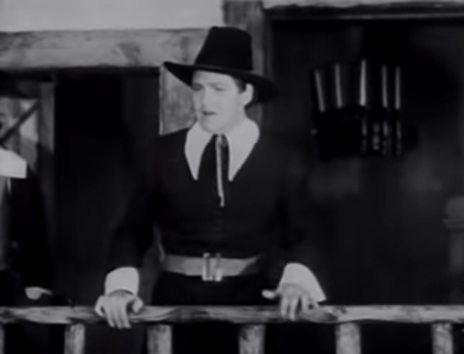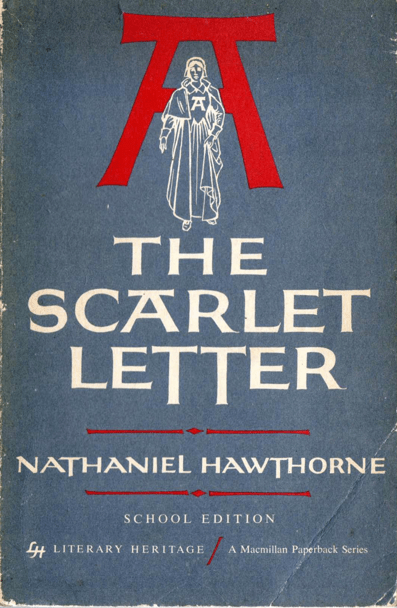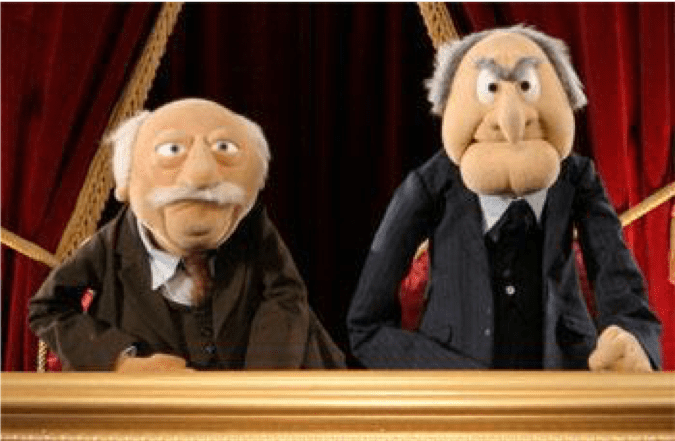By Andrew Newman
In the third chapter of The Scarlet Letter, the minister Arthur Dimmesdale stands atop a balcony overlooking the marketplace. With Governor Bellingham and the Reverend Wilson beside him, Dimmesdale calls down to Hester Prynne, who stands upon the “scaffold of the pillory,” with her infant daughter in her arms. “‘I charge thee to speak out the name of thy fellow-sinner and fellow-sufferer!’” he urges. “‘Be not silent from any mistaken pity and tenderness for him; for, believe me, Hester, though he were to step down from a high place, and stand there beside thee, on thy pedestal of shame, yet better were it so, than to hide a guilty heart through life.’”


I’m using this passage, and The Scarlet Letter, to focus the terms of this forum—higher education, hierarchy, elitism, aristocracy—in relation to my current research on the history of literature instruction in secondary schools in the United States. How did higher education, from English departments at elite universities to English education programs at what used to be called “Normal schools,” inform the selection and teaching of literary works? The foregoing sentence implies historical gender and prestige hierarchies, from the masculine domain of literary criticism to the feminine domain of education (in the “scaffold,” incidentally, is a ubiquitous metaphor). And how did the extension of theory to pedagogy affect the hierarchy within the classroom, where a teacher might be like Dimmesdale, who disingenuously demanded Hester to be “not silent,” but to give an answer he already knew? Finally, what about the “high place” occupied by The Scarlet Letter itself, which has stood with its canonical peers on a balcony above the “market-place”?
Here, I concentrate on a particular episode in the relations between higher and “lower” education, from around 1960, when the so-called New Criticism was extending its domain from the college seminar to the high school classroom, through the summer of 1966, when the leading educators who convened for the historic “Dartmouth Seminar” announced the “New English.” However, dynamic tensions between higher and secondary education, elitism and progressivism, characterize the entire history of high school English, from the top-down determination of the new subject’s curriculum by college entrance requirements, around the turn of the twentieth century, to perennial debates about the canon and contemporary concerns about a profit-driven feedback loop involving state standards, College Board examinations, and educational publishers. Moreover, hierarchies and elitism also characterize the perspective of academic literary scholars towards secondary education as a topic of inquiry. Or, more properly, they explain its neglect. Put differently, the familiar prestige differential between theory and practice, scholarship and teaching, explains why literary scholars, even Americanists who investigate literature’s social significance and the historical experience of readers, have overlooked the most socially and historically important site of interaction between readers and texts in the recent and contemporary United States. “Returning the submerged but influential history of teaching to the discipline’s conversation about itself,” as the literature professors Rachel Sanger Buurma and Laura Heffernan emphasize, “is essential for taking the full measure of literary study’s reach and impact.”
In the early 1960s, English educators framed this “reach and impact” as an issue of national importance. Congress had responded to the USSR’s 1957 launch of the Sputnik satellites by funding a greater focus on math and science education through the National Defense Education Act (1958). Humanists, at first left out of these Cold War reforms, argued that they, too, had a part to play in sustaining American democracy. Unlike today, they found support in Washington. As the National Council of Teachers of English (NCTE) declared in “The National Interest and the Teaching of English”, a 1961 report, the Golden Anniversary White House Conference on Children and Youth in 1960 had “recommended greater emphasis on humanistic studies in education,” as well as a “National Humanities Foundation” (the eventual NEH). According to the NCTE, English teachers were the foremost representatives of the humanities in K-12 education, yet they were woefully unprepared to carry out their mission of educating citizens. The NCTE presented a dire assessment of the current state of teaching conditions and teacher education.
At the time, literature professors and intellectuals were increasingly critical of high school English for adopting a supposedly progressive approach that reduced literature to a delivery mechanism for moral and ethical content. However, the “National Interest” report observed that during the same decades that progressive education dominated high school instruction, college English had turned from “the historical approach” that had characterized literary study early in the century to “critical analysis.” They lamented their survey finding that less than 30 percent of the English majors who planned to teach in high school were “required to complete a course in literary criticism or in the critical analysis of literature.”
Yet even if they hadn’t taken such a course, graduating English majors had still been exposed to the tenets of “The New Criticism,” as John Crowe Ransom denominated the emerging orthodoxy in 1941. W.K. Wimsatt and M. Beardsley’s essays on the “Intentional Fallacy” and “Affective Fallacy” told them that neither the author’s biography nor the reader’s emotional response were legitimate criteria in literary study. Their professors had modeled and rewarded them for “close-reading” analyses that emphasized the formal properties of poems and novels, expositions of figurative language, irony and paradox, the relation of the part to the whole. This rising generation of teachers brought the New Criticism to high school English. “I was sure what was needed was an emphasis on literature as literature,” recollected the English education professor John Clifford, of his early experience in this cohort of teachers: “Readers? Personal growth? Literature as a criticism of life? No, these were too reality-oriented, too subjective. Rigorous scholarship came first. After all, I rationalized, our techniques were value-free.”
As Clifford’s rhetoric implies, he came to recognize that the New Criticism was value-laden. It didn’t pose as science, as some have claimed, but rather as a humanistic counterpart to scientific rigor and objectivity. It prized difficulty. Its practitioners, who styled themselves as critics rather than scholars, imposed a hierarchy of taste. Their aesthetic priorities were partly responsible, for example, for the elevation of The Scarlet Letter—with its 24 symmetrically-arranged chapters (and despite its cumbersome autobiographical preface)—within the high school canon. “For those who wish to teach the novel as a literary form there is no better medium,” declared a typical encomium, from a 1959 Teacher’s Manual: “the plot is a model of unity, coherence, and emphasis.” This obsession with form, the “New Historicists” would later charge, entailed a blind eye to ideology. In the case of The Scarlet Letter, the failure to recognize the novel as an expression of Hawthorne’s conservative responses to feminism and abolitionism may have enabled its conservative “cultural work” during the era of women’s and civil rights.
One can chart the concomitant rise of the New Criticism and The Scarlet Letter in the NCTE’s quarterly practicum English Journal. The journal was founded in 1912, and is still thriving, but all four articles on Hawthorne’s novel appear in the 1960s. The first, “The Scarlet Letter: The Power of Ambiguity” (1962) by the Los Angeles State College professor Fred H. Marcus, is part of “a kind of refresher course” that modeled New Critical approaches for high school teachers. Marcus emphasized: “The reader must return to the text for his insights, his perceptions, his awareness, his theories, his responses.” Similarly, the titles “TONE as an Approach to The Scarlet Letter” (1964) and “Mirror Imagery in The Scarlet Letter” (1967) exemplify the text-centric constraints of the New Criticism.
However, a fourth article, from 1966, illustrates the “populist” tradition in English pedagogy. “The Scarlet Letter and Student Verse,” by Albert K. Ridout, a teacher at Pelham High School in New York, describes a lesson in which each student is asked to identify a character “to try to experience that character’s emotions,” and to express those emotions in a sonnet. (“Did my sin merit punishment so cruel,” asks the final couplet in “Upon Being Disobeyed by Pearl,” by Nena Donovan, “To watch my daughter used as Satan’s tool?”) The article contains nary a textual citation, so it doesn’t indicate what edition the students were reading, but its approach is consonant with the 1961 Macmillan School edition, which pointedly doubled down on the Affective Fallacy. “In this novel,” declared the preface, “Hawthorne has brought to life a deeply moving and thought provoking tale of love and revenge, guilt and penitence. It is one you aren’t likely to forget if you read with your emotions and senses as well as with your mind.” The invitation to “read with your emotions” took sides in a thematic opposition that was intrinsic to the narrative, in which the sensitive Dimmesdale was caught between the hot-blooded Hester and Roger Chillingworth, the close-reader.

The Macmillan edition demonstrates the renewed influence of Louise Rosenblatt, whose Literature as Exploration was published for the Progressive Education Association’s Commission on Human Relations in 1938. In the face of rising totalitarianism in Europe, Rosenblatt saw “the study of literature” as having “a very real, and even central, relation to the points of growth in the social and cultural life of a democracy.” Her “transactional” approach recognized and validated the plurality of students’ responses, and actively cultivated their emotional engagement. Literary study was a way not only to foster aesthetic appreciation, but also empathy.
In retrospect, Literature as Exploration is often cast as the antithesis of a textbook that was published in the same year: Understanding Poetry: An Anthology for College Students, by Cleanth Brooks and Robert Penn Warren. Yet the contest really began a generation later. Understanding Poetry influenced high school teaching indirectly, by modeling New Criticism for college teachers and their students. Literature as Exploration, which derided “esthetic only” approaches, was rediscovered by English educators who, in a sense, rediscovered students as agents in what Rosenblatt called “literary experience.” A revised second edition appeared in 1968 (followed by editions in 1976, 1983, and 1995), and Rosenblatt elaborated on its premises in The Reader, the Text, the Poem: The Transactional Theory of the Literary Work (1971). However, Rosenblatt, a Professor of English Education at NYU, still sailed beneath the notice of academic literary scholars, even as the theories of reader response promulgated by Stanley Fish, Wolfgang Iser and others flourished. Today, appreciations of Rosenblatt, who stayed active in the profession nearly until her death in 2005, generally begin with a discussion of her belated recognition. On the balcony: Brooks, Warren and company, or, decades later, Fish and Iser (readers of my generation of thereabouts might appreciate the image of Statler and Waldorf, the curmudgeonly muppets, issuing “balconisms”). On the scaffold: Rosenblatt, arguably the most influential American literary theorist of the century.

In the mid 1960s, leaders in English education increasingly soured on The New Criticism. A 1965 report from the College Entrance Examination Review Board’s Commission on English, “Freedom and Discipline in English,” declared that “‘close reading’ may as readily sterilize the study of literature as moralizing once stultified it.” In August 1966, representatives of the NCTE, the Modern Language Association, and the British National Association for the Teaching of English convened at Dartmouth College for the “Anglo American Conference on the Teaching and Learning of English.” The “Dartmouth Seminar” would be remembered as a landmark event in the history of English education; its outcome was a renewed emphasis on student-centered pedagogy and reader-response. “Are we spending too much time on book and author and tradition, too little on the pupil’s own response?” asked James Squire the Executive Secretary of the NCTE (he wrote the forward to the second edition of Literature as Exploration, “one of the very few books on the teaching of English that I believe all teachers should read”). Another participant, James Miller of the University of Chicago, heralded a transition from an “elitist,” “Academic” stage to a “Humanitarian phase” in English education. Instead of contriving “phony or sterile literary experiences” for high-achieving students—“an intellectual elite”—“in which complex books are intellectually analyzed but never emotionally felt or experienced,” teachers would facilitate “common experiences in language and literature” to which “students of a wide range of abilities” would “contribute from their varied lives.” Taking note of the historical swings between “elitist” and “progressive” priorities, he concluded that the “challenge will be to preserve our schools as microcosms of genuine democracy, but at the same time to educate for excellence. The problem of balancing equality and individuality is an old, old one in America.”
The “Humanitarian phase” was never fully realized, and the dialectic between elitism and progressivism has continued to characterize the relation between higher education and secondary education, to the present. As Susan Carrillo and others have pointed out, New Critical methodology is at the core of the Common Core’s ELA standards, which also deemphasize literature in favor of “informational text”; she looks to Rosenblatt for remediation. As Rosenblatt recollects in the preface to the fifth edition, when she wrote Literature as Exploration “democracy was threatened from without.” Decades later, at the height of the Cold War, English educators claimed that their work was vital to the “National Interest.” Today, to speak for literature instructors everywhere, I think many of us still believe that our work has social value. If so, it’s more needed than ever. Those of us in higher education better “step down” from our rickety balcony, and step up.
Andrew Newman teaches English at Stony Brook University. He’s the author of two books, On Records (Nebraska, 2012) and Allegories of Encounter (UNC, 2019). His current project, on the history of literature instruction in American high schools, is supported by a fellowship from the John Simon Guggenheim Memorial Foundation.
If you’re interested in this topic, please complete this survey on your own recollections of high school English.



2 Pingbacks